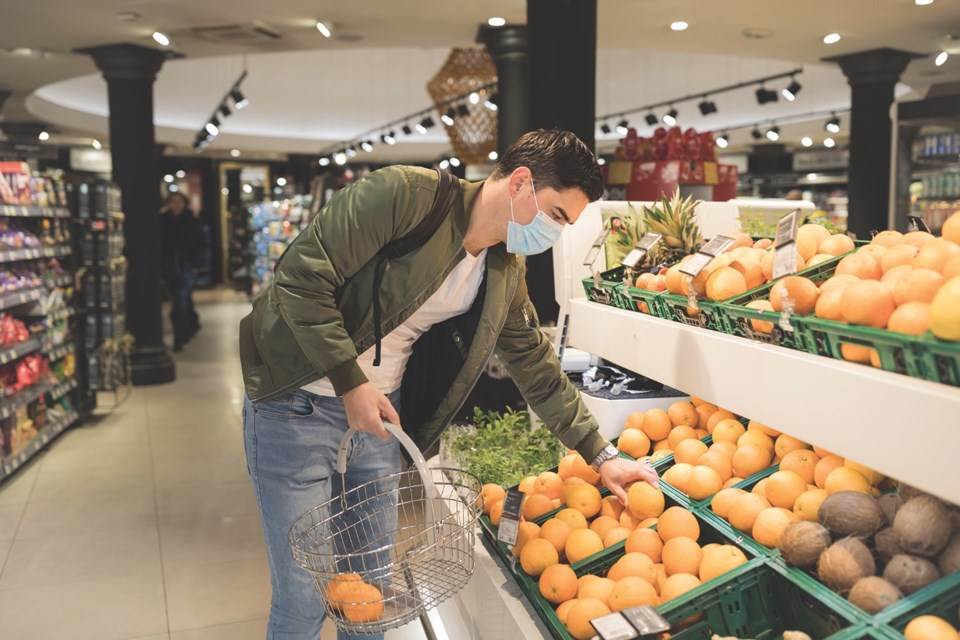The biggest grocer in Burnaby will now limit the number of customers who can shop in its stores at any given time due to a rise in COVID=19 cases.
Save-On-Foods operates five stores in Burnaby, one in each of the four city centres, plus Market Crossing in South Burnaby. Calls by the NOW to the local stores confirmed that capacity in stores will be limited to 50%.
"As part of our ongoing and increased efforts to limit the spread of COVID-19 in our stores and our communities, we will operate our B.C. stores at a maximum 50% occupancy until further notice," reads an emailed Save-On-Foods statement. "This operating capacity is in line with how we have been operating since the start of the pandemic. We have posted the occupancy count with signage at the front of each store and the teams are working to increase signage in areas that typically see congestion such as at the front end, or in service departments like our deli or bakery. This is all part of our efforts to reinforce that physical distancing is required whenever possible for the safety of both team members and customers and as outlined in our COVID-19 safety plan, which has been re-instated as ordered by our Public Health Officer."
In addition to promoting physical distancing, stores will continue with the following measures to further ensure the health and safety of team members and customers:
- Following all public health orders in every community.
- Increased frequency of disinfecting and sanitizing of all areas of our store.
- Providing sanitization stations and hand sanitizer for customers and team members.
- Implemented a symptom checker for all team members, suppliers or business partners prior to entering the building.
- Added signage at the front of every store asking customers not to enter if they have any symptoms of COVID-19.
- Installed protective plexiglass barriers throughout the store.
The company has also hired new delivery personnel to deal with a surge in people ordering groceries online to avoid going into stores.
A new study by the University of British Columbia Okanagan indicates that more and more consumers are doing their grocery shopping online.
“Prior to COVID-19, online shopping was largely done by young, well-educated and high-income individuals,” explains Dr. Mahmudur Fatmi, an assistant professor in the UBCO School of Engineering.
According to UBCO research, online shopping habits took off across the world during the pandemic — mostly as a result of social distancing measures, business closures and travel restrictions.
Dr. Fatmi says, “we decided to look into a crystal ball to investigate how shopping habits will evolve as a result of the increase in online activities since the pandemic began.”
According to Dr. Fatmi's study, urban dwellers are more likely to do in-store grocery shopping compared to those in the suburbs and people with a driver’s licence and access to a vehicle are less likely to use an online grocery service or take out meal ordering. The research also showed that frequent transit users are more likely to order online groceries and they mostly prefer going out for meals.
Dr. Fatmi also indicated that lower-income people were more likely to continue in-store grocery shopping and eating out activities.
“Our findings suggested that the ‘new normal’ when it comes to shopping will likely look a bit different than pre-pandemic.”
- With additional reporting by Rob Gibson, Castanet



